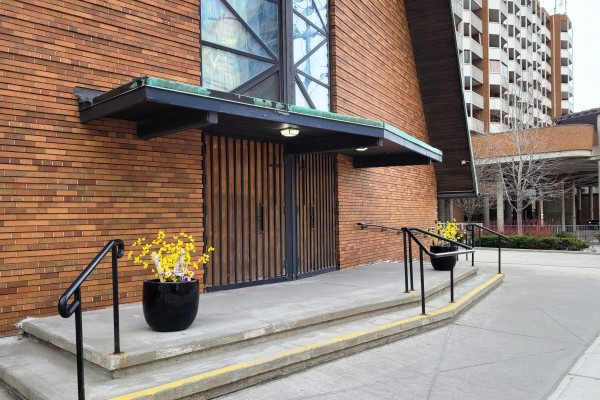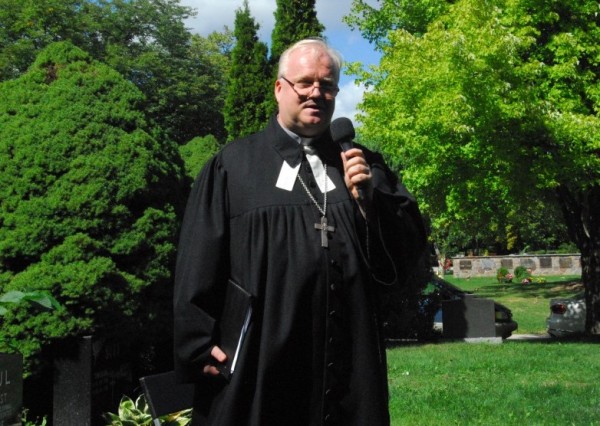The first public screening of Marcus Kolga's documentary GULAG 113, retracing the story of Eduard Kolga, an Estonian-Canadian survivor of the camps, took place after the first televised broadcast, so the best thing was to find the stories behind or beside the scenes.
The premiere was held on the final day of the estdocs, festival of Estonian documentaries, running from September 25th to 30th at Tartu College, while OMNI-TV's (the people who financed the entire film) schedule ran earlier. Maimu Mölder, the director of estdocs was a most capable emcee of the event.
"This was a very interesting project," said Paritosh Mehta of OMNI-TV's Independent Production Initiative. "We enjoyed spending a lot of time with Marcus on the project." The result was a very professional product, well timed and edited (by Heikki Novek), with excellent camerawork (by Rein Kotov).
"I couldn't tell all the stories that happened to me in Russia," said Eduard Kolga, who has just turned 90 years of age, "It would be too far from people's reality. For me it wasn't such a story because I lived through it. The main thing was that I had to survive." Kolga was sent to the Soviet GULAG system in June 1941 after his family was threatened with torture and execution
Two Members of Parliament were there also to watch the telefilm. The Honourable Bryon Wilfert, C, MP, Marcus Kolga's Member of Parliament reminded people that Canada never recognized the occupation of Estonia. The Honourable John McKay, C, MP, Eduard Kolga's and Ehatare/Eestikodu's Member of Parliament quietly watched the film with his son.
Estonian documentary maker and critic Olev Remsu noted that "one person's experiences are always more memorable than those of fifty people. This film of the experiences of Marcus's grandfather remind us how heinous were the crimes of the Soviet Union."
Marcus Kolga added, "Joseph Stalin reminded us that a single death is a tragedy, while a million is a statistic."
Throughout the documentary, a most credible witness was New York Times journalist Anne Applebaum, who won a Pulitzer Prize last year for her 2003book "GULAG: A History", considered to be the definitive study of the system. Getting her participation was a credit to the journalistic skill of Marcus Kolga.
Marcus Kolga also interviewed two Russian ladies who were human rights advocates. They showed us where some of the tens of thousands of Estonians were buried. One of the ladies stood by the gravesite and crossing herself, and wept. We needed to see the other face of Russians, the kind caring face.
"Since I had two death sentences issued against me by the Soviets because I fought with the Forest Brothers (Metsavennad), a partisan group battling against the Soviet invaders, I had butterflies in my stomach when we went across the Russian border last year. I was very relieved when we again returned to Estonia," said Eduard Kolga.
Alide Forstmanis, the Vice-President of the Latvian Federation, (the President of the Estonian Central Council Avo Kittask refers to her as the Latvian Mari-Ann Kelam, a bundle of positive energy), congratulated Marcus Kolga for his production and informed him that there were funds available to distribute his type of production. Marcus Kolga, the producer, perked up immediately.
Sandy Zwyer, a Ukrainian, Program Information Co-ordinator with OMNI-TV, said, "I regret that I was unable to record my grandfather's war memories before he died."
When we go "behind the scenes" of the production we would be remiss if we didn't mention Madeline Ziniak, the Vice-President and Station Manager who has provided the resources, basic ideas and the energy behind two seasons of "Telepeegel", 25,000 Sing, GULAG 113 and more to come. Madeline Ziniak has done more to promote a positive image of Estonians (and other diversities) than anyone else. Perhaps we should make her an Estonian citizen and get a jump on all the other nations that she has helped and want her.
A pall of reality was brought to us by Jaan Timusk who simply said, "300,000 Estonians died during or as a direct cause of the war." Out of a pre-war population of 1,250,000 that amounts to quarter of our population, one out of four. I thought of the people I know and shuddered.
"We need to remind people of this slaughter, so that they never forget," said Irene Loosberg.
Marcus Kolga, thank you for a professional, moving film.
Eduard Kolga, we need more of your talents. With the film as proof, you can teach our youth that they too can survive the horrible indignities that a small nation can be subjected to.
GULAG 113 - the premiere (1)
Archived Articles | 07 Oct 2005 | Adu RaudkiviEWR
Viimased kommentaarid
Kommentaarid on kirjutatud EWR lugejate poolt. Nende sisu ei pruugi ühtida EWR toimetuse seisukohtadega.
Will they show GULAG 113 on omni?
Archived Articles
TRENDING





















